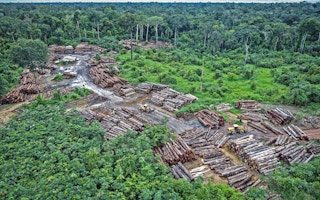In January, it was revealed that as much as 90 per cent of the carbon credits approved by one of the world’s largest certifiers may be phantom, thus not representing actual reductions of carbon in the atmosphere. While the scandal may have shocked some, it should be no surprise. Today’s voluntary carbon markets are not designed to be fit for purpose.
The logic behind carbon-offset markets is simple and compelling. If companies must pay for their carbon dioxide emissions, they will have a strong incentive to emit less, and more money will flow toward activities that avoid, reduce or remove emissions. But if such a huge share of certified offsets is of poor quality, the concept is clearly failing. Given the centrality of offsets to corporate net-zero pledges, this does not bode well for global climate action.
Making matters worse, poorly governed carbon-offset markets have enabled the rise of “carbon cowboys.” These carbon-credit dealers underpay the businesses and communities in the Global South that provide nature-based offsets, which they then sell with a markup to developed country clients.
Many climate activists argue that any market-based approach is fundamentally flawed, enabling companies to remove carbon dioxide numbers from their balance sheets by purchasing offsets without actually reducing emissions. In this way, critics argue, companies avoid public and political pressure to transform their operations, and the pace of decarbonisation actually slows.
But the problem with the carbon-offset system is not that it is market-based. The problem is the absence of a robust governance framework to ensure that the market delivers on its public purpose. Even markets with contested reputations, such as those for finance and pharmaceuticals, have rules that go beyond certifying the quality of the products traded, to ensure some accountability of market actors and, often, to set the prices that they can charge.
Voluntary carbon markets, by contrast, rely almost exclusively on private certification schemes supposedly affirming that a certain quantity of greenhouse gases – one ton of CO2 equivalent per carbon credit – has been either kept out of the atmosphere or removed from it. Certification does have an important role to play, but it cannot work unless it is supported by a broader governance framework. Just as we would never leave, say, food or pharmaceuticals to be governed exclusively through voluntary, certification-based systems, we should not do so for carbon emissions.
The good news is that efforts to strengthen governance of voluntary carbon markets are underway, both at the national level and through private international initiatives, such as the Integrity Council for the Voluntary Carbon Market. The Taskforce on Nature Markets, for its part, is advancing proposals for the robust governance of all nature markets, including carbon markets. But we must increase the pace, ambition, and impact of these efforts.
Building credible, effective carbon and biodiversity credit markets requires progress on multiple fronts. A more radical level of transparency and accountability is needed so that everyone can see exactly what deals are being made and by whom. Traders need to be accredited, not least to end the carbon-cowboy phenomenon. Affected voices must be heard, and interested stakeholders must be visible. This will provide important quality signals to the market, reducing the desirability and valuation of poor-quality offsets and flawed certification, while protecting human rights.
It is also time to establish minimum price floors, in order to crowd out poor-quality offsets and actors, and to advance more equitable outcomes, especially for the Global South, indigenous peoples, and local communities.
Finally, international governance arrangements must be upgraded. Principles and guidelines are not enough to ensure the exclusion of poor-quality products, inequitable deals, rogue traders, and, more broadly, markets that do not comply with minimum agreed standards.
In all of these areas, devising promising solutions, implementing pilot programs, and scaling successful initiatives would be relatively straightforward. Such efforts should draw on existing platforms and initiatives that bring together market actors, civil society, representatives of indigenous peoples and local communities, experts, and policymakers. Digital tools like so-called smart contracts can accelerate progress, especially when it comes to boosting transparency and accountability.
Getting carbon and biodiversity credit markets right is a determining factor in achieving our climate, nature, and broader development goals. If we fail to do so, these goals may become unreachable. In fact, without a comprehensive makeover, these markets will more likely be part of the problem.
Simon Zadek is Executive Director of NatureFinance.
© Project Syndicate 1995–2023











